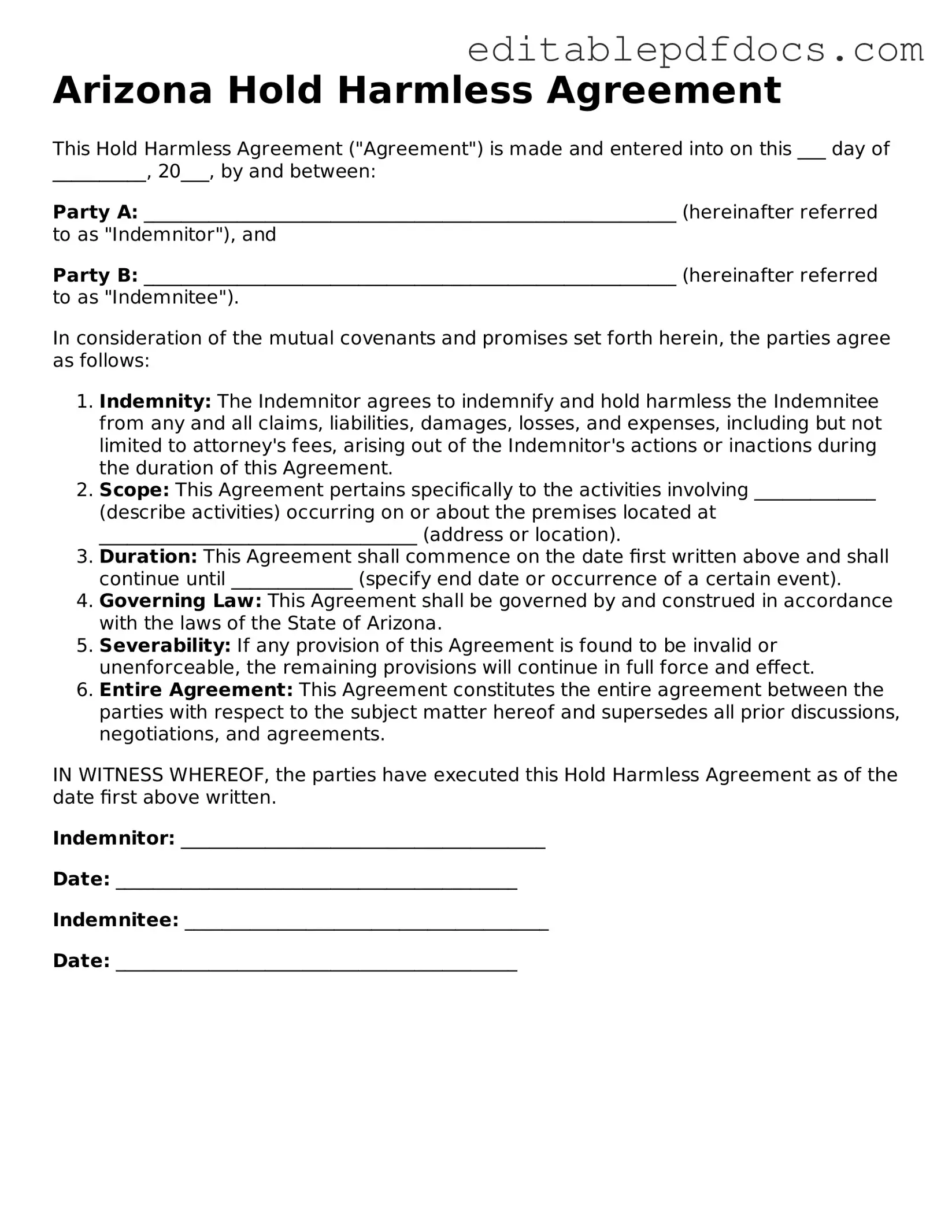When filling out the Arizona Hold Harmless Agreement form, individuals often overlook critical details that can lead to complications down the line. One common mistake is failing to read the entire document thoroughly. Many people skim through the agreement, assuming they understand its implications. This can result in signing away rights or agreeing to terms that may not be in their best interest.
Another frequent error is neglecting to provide accurate personal information. The agreement requires specific details, such as names, addresses, and contact information. Omitting or incorrectly entering this information can render the agreement invalid or lead to difficulties in enforcement.
People sometimes also forget to specify the scope of the agreement. A Hold Harmless Agreement should clearly outline what activities or situations it covers. Without this clarity, misunderstandings may arise, and individuals could find themselves liable for issues they thought were protected.
Additionally, many fail to consider the implications of signing the agreement without consulting a legal professional. While it may seem straightforward, the nuances of liability and indemnification can be complex. Seeking legal advice can help individuals understand their rights and obligations, ultimately leading to better decision-making.
Another mistake is not having all parties involved sign the agreement. If the agreement is intended to protect multiple individuals or organizations, it is crucial that everyone involved signs it. An unsigned agreement may not hold up in court if a dispute arises.
People also tend to overlook the importance of keeping a copy of the signed agreement. After signing, individuals should ensure they have a copy for their records. This can be vital if questions about the agreement’s terms or enforcement come up later.
Lastly, many individuals fail to update the agreement when circumstances change. Life events, such as changes in partnerships or new activities, may necessitate a revision of the Hold Harmless Agreement. Keeping the document current ensures that it remains relevant and effective in protecting against liability.
